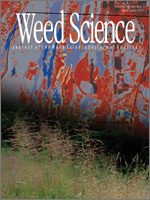Field pea cultivars often differ in weed competition. In several crop types branching has been cited as one of the characteristics conferring competition with weeds. The objective of this study was to determine the difference in weed competition among field pea cultivars differing in basal branching and other characteristics. Ten field pea cultivars with divergent basal branching ability were seeded at 50 plants m−2 under weedy and weed-free conditions to evaluate their competition with weeds. Branching did not differ greatly between cultivars and was not associated with the weed competiveness of the field pea cultivars. The forage pea cultivars, which were leafed and had longer vines, were much more competitive than the semi-leafless grain cultivars. As a result, the forage cultivars were better able to suppress weeds and maintain their yield under weed presence. However, the absolute seed yield of the forage pea cultivars was low, making them a poor choice for seed production. Vine length and the leafy characteristic may be important genetic characteristics associated with competition in field pea cultivars.
Nomenclature: Imazamox; imazethapyr; glyphosate; pea, Pisum sativum





